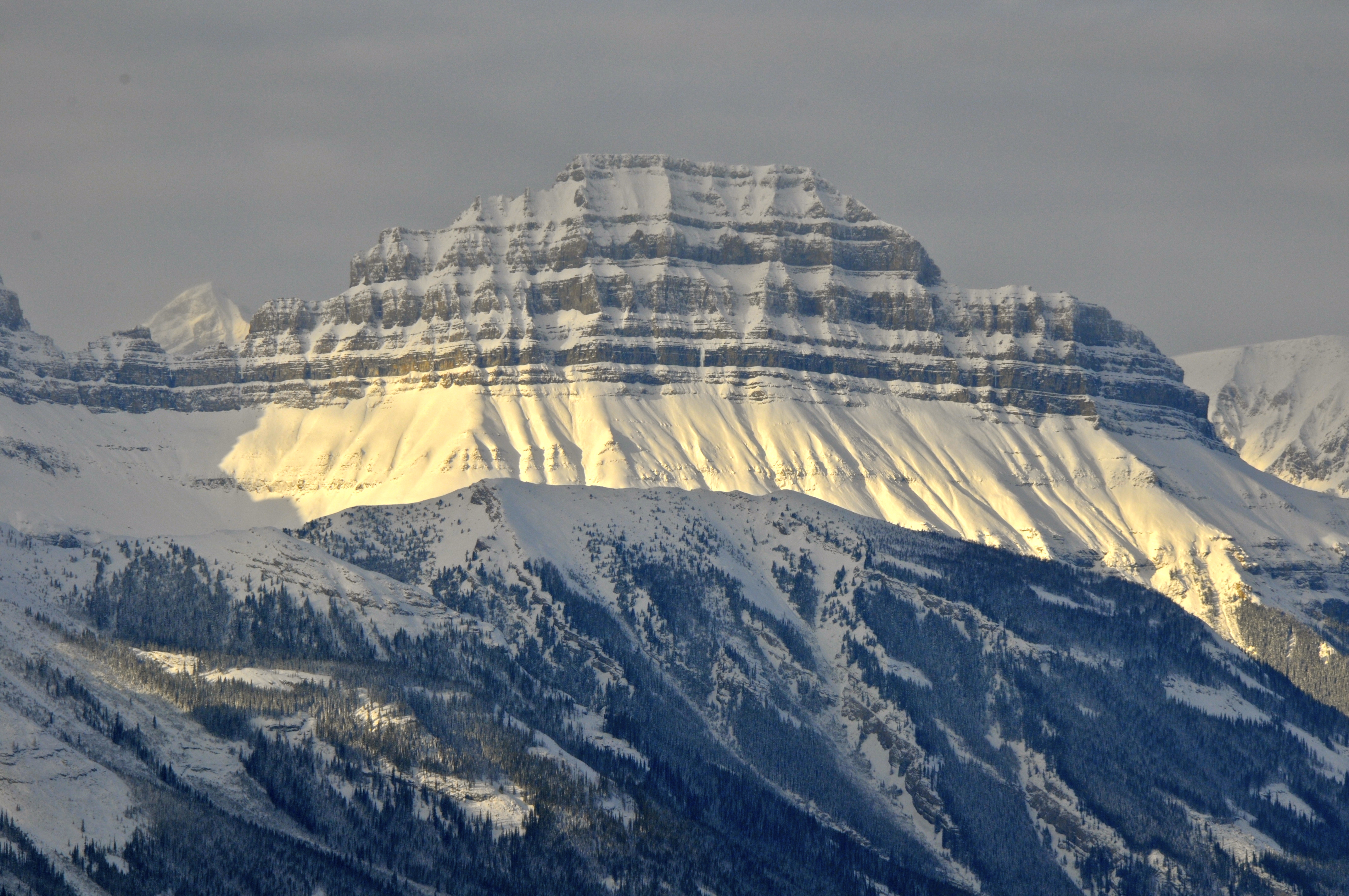Massive Mountain on:
[Wikipedia]
[Google]
[Amazon]
Massive Mountain is situated in

 The mountain is composed of
The mountain is composed of
Banff National Park
* Massive Mountain weather
Mountain Forecast
Two-thousanders of Alberta Mountains of Banff National Park {{AlbertaRockies-geo-stub
Banff National Park
Banff National Park is Canada's oldest National Parks of Canada, national park, established in 1885 as Rocky Mountains Park. Located in Alberta's Rockies, Alberta's Rocky Mountains, west of Calgary, Banff encompasses of mountainous terrain, wi ...
, Alberta
Alberta ( ) is one of the thirteen provinces and territories of Canada. It is part of Western Canada and is one of the three prairie provinces. Alberta is bordered by British Columbia to the west, Saskatchewan to the east, the Northwest Ter ...
Canada. It is located in the Massive Range and was named in 1918 for its massive size. It however is not the highest summit in the range, that belongs to Mount Brett
Mount Brett is a summit located in the Massive Range of Alberta, Canada It is situated in Banff National Park, west of Banff townsite, in the Canadian Rockies. Its nearest higher peak is Mount Ball, to the west.
History
Mount Brett was nam ...
().
__NOTOC__Geology

 The mountain is composed of
The mountain is composed of sedimentary rock
Sedimentary rocks are types of rock that are formed by the accumulation or deposition of mineral or organic particles at Earth's surface, followed by cementation. Sedimentation is the collective name for processes that cause these particles ...
laid down during the Precambrian to Jurassic
The Jurassic ( ) is a geologic period and stratigraphic system that spanned from the end of the Triassic Period million years ago (Mya) to the beginning of the Cretaceous Period, approximately Mya. The Jurassic constitutes the middle period of ...
periods. Formed in shallow seas, this sedimentary rock was pushed east and over the top of younger rock during the Laramide orogeny
The Laramide orogeny was a time period of mountain building in western North America, which started in the Late Cretaceous, 70 to 80 million years ago, and ended 35 to 55 million years ago. The exact duration and ages of beginning and end of the ...
.
Climate
Based on theKöppen climate classification
The Köppen climate classification is one of the most widely used climate classification systems. It was first published by German-Russian climatologist Wladimir Köppen (1846–1940) in 1884, with several later modifications by Köppen, notabl ...
, it is located in a subarctic climate with cold, snowy winters, and mild summers. Winter temperatures can drop below -20 °C with wind chill factors below -30 °C.
References
External links
* * Parks Canada web siteBanff National Park
* Massive Mountain weather
Mountain Forecast
Two-thousanders of Alberta Mountains of Banff National Park {{AlbertaRockies-geo-stub